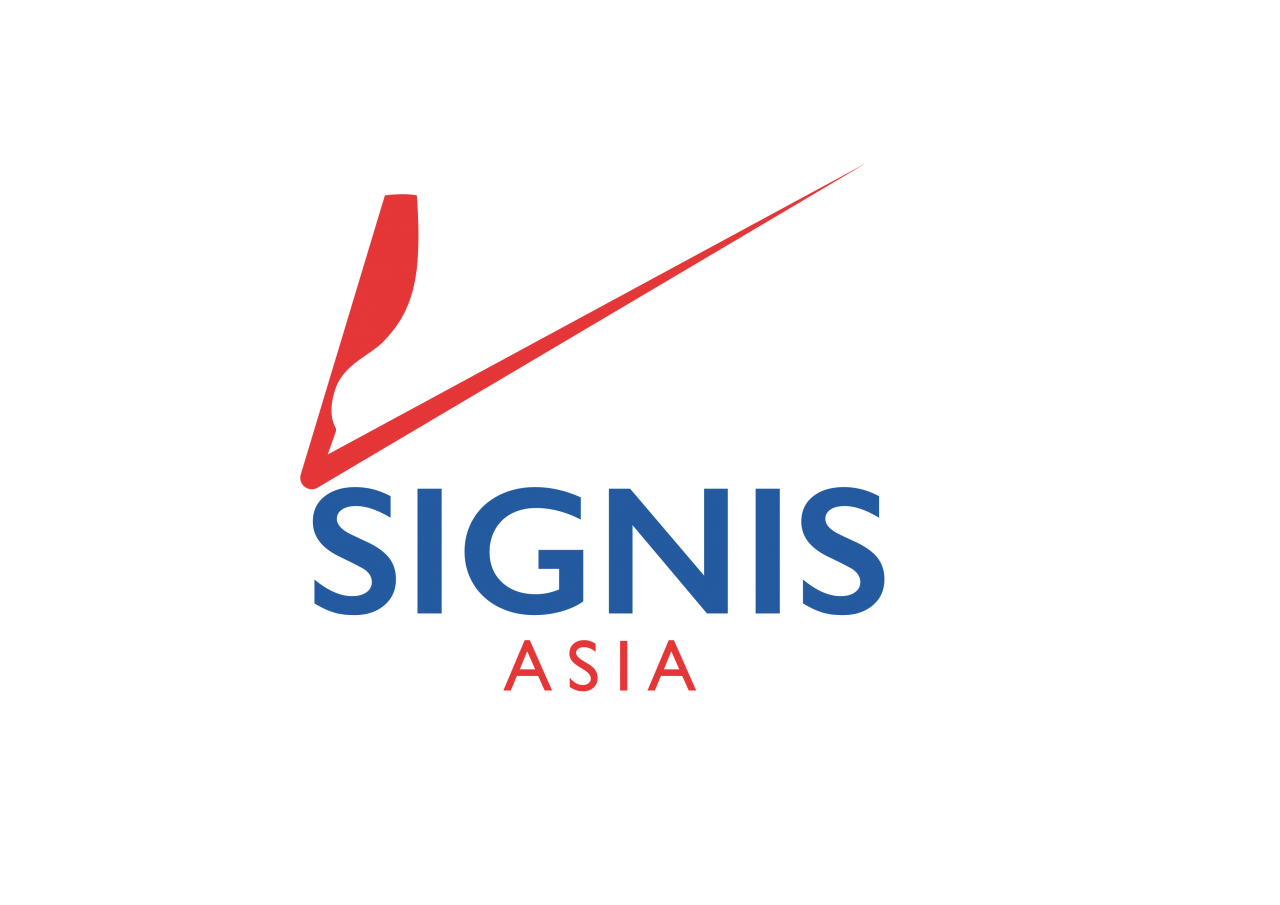SIGNIS ASIA AND COVID-19 WEBINAR STUDIES 2020

The Role of Media and Communication and Beyond November 18-19, 2020
(BKK Time 1600-1915)
The COVID-19 pandemic
Today's world is faced with the extensive spread of COVID-19. This pandemic exerts intense pressure on health, economic and social structures. The need of the moment is the proper implementation of approaches to public health and strong leadership by the governing bodies of each nation. Lack of awareness, knowledge and preparation would put individuals and healthcare personnel at risk during this crisis period.
The dilemma is how to transmit knowledge of current statistics on diseases and their prevention to the general population at a rate equivalent to or better than the spread of the virus.
Disinformation
Unfortunately, a great deal of health-threatening misinformation is spreading at a faster rate than the disease itself. Most of this false rumor is spread through social media.
Providing fast, accurate and reliable information that addresses critical infection control issues is crucial at this juncture. Unfortunately, this was not well done by various institutions. The role of social media was not well used to close the information gap. Lack of communication and lack of need for communication has made the situation worse.
Dr. Tedros Adhanom, Director General of the World Health Organization (WHO), calls this a battle against "trolls and conspiracy theories." Misinformation creates confusion and spreads fear, hampering the response to the outbreak. The government and health professionals should adopt and plan for the use of social media, work together, establish limits and construct guidelines for their use, and above all, make them
I work for the general population.
Effective communication
Effective communication between citizens and public health authorities and / or governments through the media and social media platforms are among the essential components of success.
pandemic responses. WhatsApp and Facebook dedicated to the World Health Organization (WHO)
Messaging services in seven languages help keep people safe and up-to-date on coronavirus-related facts and cover two billion people. People can also stay in contact directly with WHO.
two
The immediate development of a communications plan with tools as a contribution to the public is required. Health response needs for future global outbreaks.
Risk communication
Risk communication is also now part of the regional emergency response preparedness program for health emergencies. Strengthening risk communication capacity is an essential component of global efforts to improve global health security.
Since the announcement of COVID-19 as a pandemic, the media and social media have been inundated with information. Some information is aimed at educating people about the new virus, and other misinformation generates fear, anger and panic among people.
Government agencies, public health authorities, religious institutions and NGOs should use the media to raise awareness among the population.
Objectives of the webinar:
1. Understand the impact of COVID-19 on Asian socio-economic and political spheres and plan strategies to support the poor and vulnerable sectors of society.
2. Analyze the role of the media in containing the spread of COVID-19.
3. Acquire knowledge of our interventions as a communication organization, Church institution and as individuals to contain the spread of COVID-19 and rehabilitation activities.
4. Explore the possibilities of turning the challenges posed by COVID-19 into opportunities.
SCHEDULE
DAY 1 (18.11.2020): 16.00-1915 (BKK time)
16.00-16.15 Song of Prayer: Mr. Bernard Factor Caneberal, Manila, Philippines.
Welcome address: Fr. Joseph Anucha, President of SIGNIS Asia.
Introduction to the webinar: Dr. Magimai Pragasam, Coordinator of study days.
1615-1710 SESSION I (Presentation 15 Mins each and final Interaction 10 Mins)
Impact of COVID-19 on socio-economic and political spheres in Asia:
How it affects the poor and vulnerable sectors of society:
Prof. N. Vinod Chandra Menon, Founding Member, National Disaster Management
Authority (NDMA), Government of India.
Dr. Richard, Executive Director, Karuna Mission Social Solidarity (KMSS),
National Office, Myanmar.
Mr. Aloysius James, International Consultant and Visiting Professor on Disasters and Crises
Administration.
3
1710-1715 Song of Mrs. Sana George, Lahore, Pakistan.
1715-1810 SESSION II (Presentation 15 Mins each and final Interaction 10 Mins)
Role played by the media in containing the spread of COVID-19:
Mr. Varghese Joseph, Senior Journalist and Editor of "India Catholic Matters", India.
Role played by the UN, governments and NGOs in containing the spread of
Covid-19: UNICEF / WHO official.
How the Asian Church used the media:
P. Cedrick Prakash SJ, social activist, India.
1810-1815 Song of the Rev. Dr. Norbert Herman SVD, India
1815-1905 SESSION III (Presentation of 10 minutes each and final question and answer 5 minutes)
Perspectives of our interventions during COVID-19:
1. Fr. Francis Guntipilly SJ on his work in Bangalore, India.
2. Fr. Qaisar Feroz, OFM Cap, on his work in Lahore, Pakistan.
3. P. Katayanagi SJ, about his work in Japan.
4. Mr. Adrian Pereira and Mr. Terence Charles, on their work in Malaysia.
1905 - 1915 Message from Mrs. Helen Osman, President of SIGNIS World.
Words by Dr. Magimai, Coordinator of the Study Days.
DAY II (19.11.2020): 16.00-1915 (BKK time)
16.00-16.10 Song of Prayer by Mr. Evans Dominic Rosario, Dhaka, Bangladesh and
Welcoming remarks from Ms. Adeline James, Malaysia.
1610-1625 SIGNIS World Congress 2022 - Ms. Anna You Ji-hyun, Korea.
1625-1635 Summary of Day I - Dr. Magimai, Study Days Coordinator.
635-1720 SESSION IV (Presentation of 10 minutes each and final question and answer 5 minutes)
Insights from our interventions during COVID-19: (Continued)
1. Fr. Anand Mathew, IMS on his work in Varanasi, India.
2. Fr. Antonio Lalu, about his work in Indonesia.
3. Ms. Helena Choi and Mr. Romulus Lee, on their work in South Korea.
4. Fr. Paul Samasumo, VP, SIGNIS World, on the contribution of the Church
in Rome.
4
1720-1815 SESSION V (Presentation 15 Mins each and final Interaction 10 Mins)
Post-COVID Scenario: New Normal, Issues Facing Church, Artificial Intelligence, Privacy
Problems, etc., turning challenges into opportunities
1. Rev. Dr. XD Selvaraj, theologian, Tuticorin, India.
2. Rev. Dr. Antony Le Duc SVD, Deputy Director, Asian Research Center for Religion
and social communication, Thailand.
3. Mr. Aloysius James, international consultant and visiting professor on disasters and
Crisis management.
one
815 - 1820 Salesian Radio Song, Darjeeling, India.
1820-1845 SESSION VI: Action Plan - Brainstorming
- Mr. Aloysius James
1845-1855 Presentation of the declaration of the webinar
- Mr. Sumit Dhanraj (India) and Mr. Perry Paul Lamanilao (Philippines).
1855 - 1915 Evaluation, announcement in the business day session
Message from the President of SIGNIS Asia
Final words from the coordinator of the study days and
Bernard Factor Caneberal's Prayer Song, Manila, Philippines






